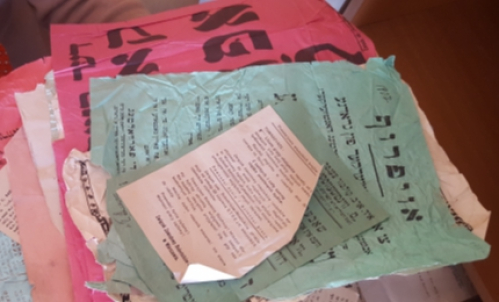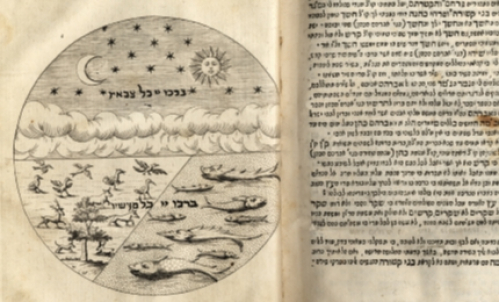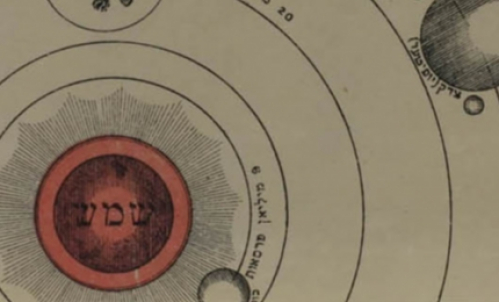How Jewish Scholars Helped Save Karaites from the Nazis
by ROBERTA NEWMAN
What is this scrap of paper with scribbles in German on them, one might with justification ask, and what is it doing in YIVO’s Vilna Collections?
The massive plunder of art and cultural treasures looted by the Nazis during World War II resulted in document collections ending up far from their original points of origin. The Einsatzstab Rosenberg, one of the key Nazis agencies charged with confiscating cultural treasures from victimized communities and individuals, removed their spoils to Germany and to temporary hiding places in Nazi-occupied territory elsewhere in Europe. It was almost as if someone had taken the great libraries, archives, and private art collections of Europe and thrown all their paintings, documents, and books up into the air, letting them fall where they might.
This particular scrap of paper was found in the depot in Offenbach, Germany, where the remains of YIVO’s looted collections were recovered after the war. Together with millions of other documents and thousands of books, it was crated and shipped to YIVO in its new headquarters in New York, arriving there in 1947.
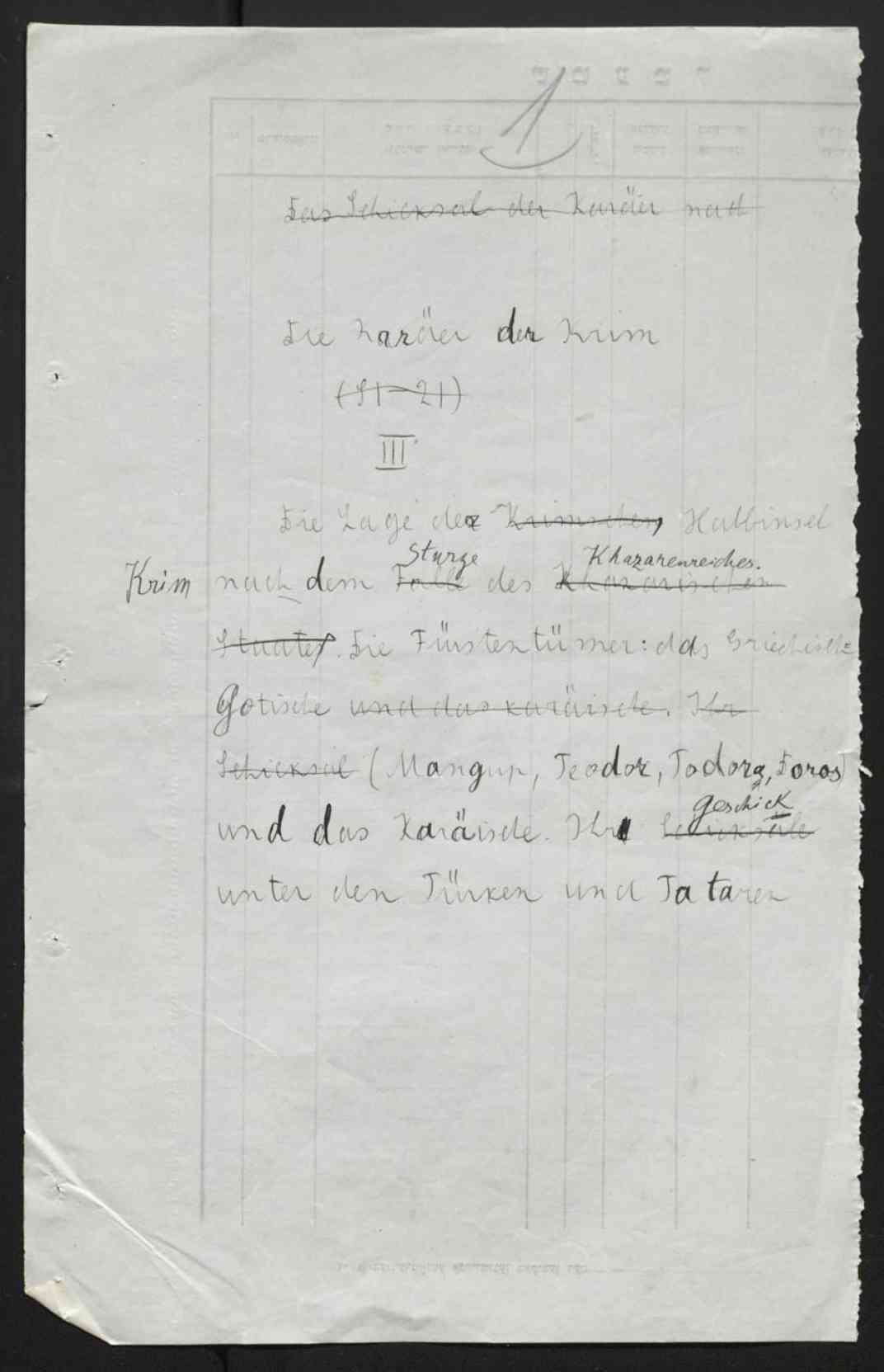
(The Karaites of Crimea). (YIVO RG 40, Folder 14)
The document seen here was not part of YIVO’s prewar collections. Instead, it was created during the Nazi occupation of Vilna, when the former YIVO building was serving the Nazis as a sorting center for looted materials, and some of YIVO’s staff and scholars had been pressed into service to help carry out the plunder and destruction of Jewish collections in the region.
It illuminates a side project of the Nazis, a little-known sub-chapter of the destruction of Jews and Jewish civilization in Lithuania: how to determine whether Karaites were Jewish, and thereby slated for genocide, or not of Jewish origin, meaning that they would be spared.
The Karaites were members of a Jewish sect that arose in Iraq in the 8th century and broke away from mainstream Rabbinic Judaism. They rejected the authority of the rabbis and Talmud in favor of reliance only on the Hebrew Bible. The largest Karaite populations were in Egypt, Turkey, and the Crimean Peninsula but there was also smaller communities in Lithuania and Poland. Under Tsarist rule, the Karaites applied to the officials to be legally differentiated from the Jewish community and by 1863 they were granted rights that put them on an equal footing with Christian citizens. A new ideology took hold among them with an emphasis on proving Turkic origins and downplaying any connections to Jews and Judaism.
When the Nazis came to power, the small Karaite community of Berlin lobbied the regime for exemption from the Nuremberg Laws on the grounds that they had been designated as non-Jews in Czarist Russia. Provisionally, the Reich Agency for the Investigation of Families agreed to define Karaites as non-Jewish.
But the question of the Karaites’ relationship to the Jewish people was not an entirely closed one for the Nazis. In Vilna, the Einsatzstab Rosenberg ordered scholar Zelig Kalmanovitch to produce a bibliography and survey on the history of the Karaites and to supervise the a team to translate source material, some of it rare and unpublished, into German. What remains of the work of this group was recovered after the war and assembled into a collection at YIVO, Record Group 40, Karaites. It has recently been digitized for the Vilna Collections Project.
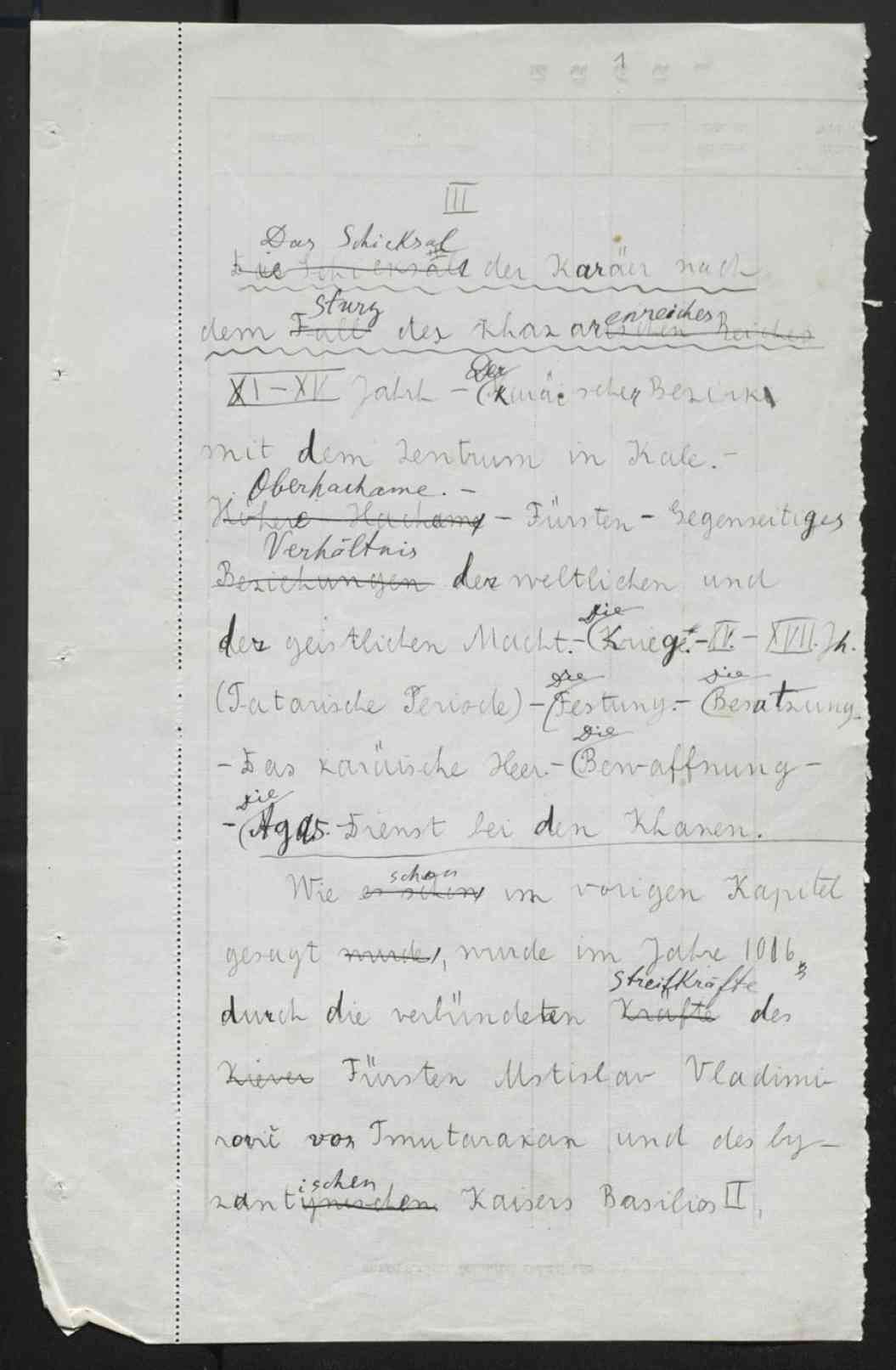
(The Karaites of Crimea). (YIVO RG 40, Folder 14)
The documents seen here are from a rough translation into German of Seraya Szapszał’s Russian-language “The Karaites of Crimea.” Szapszał (1873–1961) was a Karaite leader and the leading proponent of the theory of the Karaites’ Turkish origins. (Even the paper on which this manuscript is written, pages ripped from the ledger of a shipping or transportation company, testifies to the plunder of Jewish organizations and businesses.)
RG 40 was prepared for digitization by YIVO Project Archivist Shmuel Klein. In his introduction to the materials, Rabbi Klein reports on another event related to the Nazis’ investigation of the Karaite community in Lithuania:
The Nazi authorities arranged for a debate in the Vilna ghetto between Zelig Kalmanovitch and the Karaite leader Seraya Szapszał, on the status of the Karaites. Kalmanovitch went out of his way to demonstrate through whatever historical sources and documents he had at his disposal that the Karaites were correct in their claim that they were not of Semitic origin, and had no racial connection with the Jewish people.
Kalmanovitch was one of three Jewish historians called upon by the Nazis to weigh in on whether the Karaites were of Jewish origin. Despite the fact that before the war they were opponents of the “Turkic origins” thesis, all three of them supported Szapszał’s assertions. This “dejudaization” of the Karaites was at least tentatively accepted by the Nazis. The Karaites of Lithuania were spared the fate of the Jews.
The entire Karaites Collection will be available online by Spring 2017.
Roberta Newman is YIVO’s Director of Digital Initiatives.
